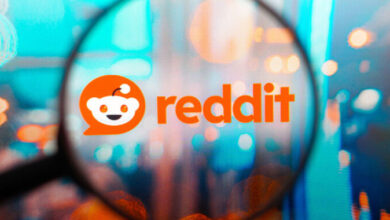Four months in, here’s the rundown of Google’s Chrome cookie conundrum so far
Four months down, and Google’s endeavor to wrangle the tracking chaos in Chrome is… well, let’s call it complex. A grand total of one percent of browser traffic is now free from third-party cookies. Hooray? Amidst the ensuing chaos, there’s been a medley of trial and error, wild guesses, and enough pontificating to fill a library. Time to hit pause, sift through the wreckage, and brace ourselves for the next act in this digital circus of drama.
Sure, it might seem like the scraps left behind without third-party cookies, but it’s enough to whet the appetites of ad execs everywhere. After four years of nothing but speculation, that’s quite the appetizer for now. It’s a step toward making that seismic, yet cryptic, announcement from way back in 2020 a reality. The tech they’ve developed, the theories they’ve crafted — this is the litmus test to see if they’re heading in the right direction.
Wait, what does that one percent of traffic without third-party cookies actually mean?
Beyond affecting roughly 30 million Chrome users, that one percent packs a punch in a few ways. Firstly, it’s not just one homogenous group — it’s split into two distinct subgroups. The first group, constituting three-quarters of the traffic, has the Privacy Sandbox label and boasts a cookie-free existence. The remaining quarter, however, flies under the radar with no labels whatsoever — no Privacy Sandbox, no third-party cookies, nada. This split lets ad execs compare the prices of ad impressions bought via the Privacy Sandbox with those acquired through traditional third-party cookies.
About those labels?
If a browser (maybe yours) is part of one of these groups, it’s assigned a label that it sends to any websites it visits. Throughout the testing period, the browser constantly sends the same label, facilitating experiments to measure the impact effectively.
OK, so when will Google start focusing on the other 99% of traffic in Chrome?
Who knows. Google execs are playing it coy about when it will boot out the remaining cookies. All they’ve done is give ad execs a vague promise to wrap it up by year’s end. This fog of uncertainty has sparked a whirlwind of speculation — some are even questioning if Google will pull it off at all. It’s not exactly a confidence boost for the tech giant, but it’s understandable. With the U.K.’s Competitions and Markets Authority breathing down its neck, Google is walking on eggshells as it wades through this cookie clean-up. One misstep could turn the whole thing into a dumpster fire.
So the CMA has a lot of sway here then?
In a nutshell, yes. Unless the CMA gives Google the green light, third-party cookies aren’t going anywhere. Why? Because back in 2022, Google made a legally binding commitment with the regulator to address competition concerns with its Privacy Sandbox of alternatives to those cookies until 2028. The CMA’s decision on whether those concerns have been met is expected over the summer. But Google better have its ducks in a row, because the regulator will be closely scrutinizing how the sandbox has fared among ad execs to make that call.
Ah, the tests.
Like every other part of this story, this chapter is about as clear as mud. So let’s start with the part that’s a little less complicated: there isn’t much testing happening right now. There’s no rush to test authenticated IDs, no widespread exploration of cross-site targeting and measurement with probabilistic IDs, and certainly no pile on contextual solutions. Yes, there are some pockets of activity in these areas, but it’s not the widespread dash that many anticipated would occur once third-party cookies began to phase out. That said, testing hasn’t been a complete dud. There’s arguably a bit more activity when it comes to the sandbox.
Hold on, I thought the sandbox was mired in uncertainty?
It is. But for some advertising executives, ignoring the sandbox poses a significant risk. If the sandbox does eventually receive approval, those who haven’t prepared would find themselves severely under-equipped. They would lack the necessary technology, expertise, and strategic position regarding what is likely to become one of the main alternatives to third-party cookies, for better or worse. Simply put, despite the uncertainty surrounding the sandbox, some ad execs feel compelled to take it seriously and prepare accordingly.
Got it. So what are they testing?
Initially, the focus has been on three key areas within the sandbox: the Topics API, the Protected Audiences API, and the Attribution Reporting API. These components essentially serve as the sandbox’s solution for contextual advertising, targeted advertising, and measurement.
So far so good?
That might be true for testing the Topics API, which seems to be progressing smoothly, but not so much for the other two parts of the sandbox being tested. The issue lies in the location of the ad auction within the sandbox. Traditionally, ad auctions occur in the ad server, but within the sandbox, they take place directly in the Chrome browser. This shift means that publishers are left in the dark about which interest groups advertisers are targeting using the PAAPI on their pages. All the necessary information for conducting successful auctions isn’t quite aligning as expected.
And even if it did, many ad execs might struggle to understand what impact those ads actually had on their business. In fact, that’s almost certain given they need to generate sufficient conversions from their ads, which as an example, by default, this would be a thousand for daily reports. Falling short of this threshold results in the introduction of additional “noise” data into the campaign data to maintain anonymity or the need to simplify the report.
But if the auction is happening in the browser how do you audit that data?
It’s a valid question given the uncertainty over whether measurement methodology could work well enough in the browser to deliver the accuracy needed for billing. That said, Google has said it’s fine. Since the code for the sandbox is open source then it should be relatively straightforward to see and check.
It doesn’t sound like the sandbox is going to be a direct replica of the third-party cookie?
Nope, that’s the whole point. It’s Google’s answer to the chaos caused by those cookies. They were a breeding ground for ad fraud and data breaches. True, Google’s approach might seem overwhelming for online advertising, but maybe it’s about finding that sweet spot. Some lost use cases might still be in there, like video advertising, just not as clear-cut yet.
How does everyone feel about this lack of functionality in the sandbox?
Not great, obviously. Publishers feel like they’re being overlooked, ad tech worry they’re in a bind, and advertisers are just confused.
Putting it all together, there are some major unresolved issues, right?
You could say that. Chief among them is the uncertainty over whether Google will take the reins once third-party cookies are gone. Ad execs are worried about handing over control to a company with a shaky track record that’s being reviewed by lawmakers. It’s like giving your house keys to someone who’s been caught snooping around before and is currently on the wrong side of the law.
What happens next?
Tests, tests, and more tests. But in the meantime, it’s like waiting for the other shoe to drop.
https://digiday.com/?p=539701



